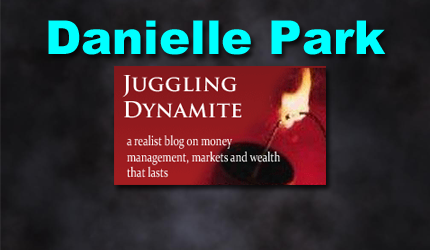September 16, 2025 | Stock Owners Have Learned To Love The Bomb

Since 1950, the S&P 500 index has averaged a 5-year annualized earnings growth rate of 7%. Today, S&P 500 pricing assumes a forward 5-year annualized earnings growth rate of 15% (Rosenberg Research).
Leveraging this extraordinary optimism, the S&P 500 is trading at more than 23x 5-year forward earnings expectations, some 28% above the longer-term historical average of 18x, and 38x its Shiller CAPE (10-year Cyclically Adjusted Price-Earnings), more than 120% above CAPE’s 17x long-term average.
Indeed, on all 8 of the most historically reliable valuation measures (Trailing P/E, Forward P/E, CAPE, price to book, price to sales, EV/EBITDA, Q Ratio, and Market Cap to GDP), the stock market today is the most richly valued since at least 1900, and comparable only to the infamous bubbles of 1999, 1965 and 1929 (see red circles).
Although the economy and income growth are stumbling on most fronts, hope springs eternal that Artificial Intelligence (AI) spending will overcome all problems.
The top ten most expensive S&P 500 companies (9 of which are tech cos, as shown below) make up over 39% of the market cap (this was less than 30% at the last tech bubble peak in March 2000), while the top 5 most expensive (all tech cos) make up 27% (this was 12% in the 1965 secular market peak).
Historic concentration in one sector (tech) means that stock investors are exposed to more single stock/single sector risk today than ever before. Some rare and vital perspective is offered in The Market’s Riskier Than It Used to Be—and Investors Love It:
Investors have a strange relationship with risk. On the one hand, they want it: Risk brings reward when it works out. On the other hand, unrewarded risk is the very last thing anyone wants.
The result is the all-too-familiar swing between fear and greed, boom and bust, as investors switch from loving risk to fleeing it. This is relevant to today’s stock market because the market is riskier than it used to be on three important metrics:
First, it is much more concentrated in a handful of stocks than in modern times. That means investors who simply track the market are taking much more single-stock risk than in the past.
Second, the stocks that dominate the market are heavily exposed to one big bet, on generative artificial intelligence, into which they are expected to pour almost $400 billion this year.
And third, everyone agrees that those stocks are phenomenal and bound to go up, creating a form of groupthink vulnerable to a sudden reverse on any setbacks.
Those over the age of 55 own an estimated 80% of all stocks and stock funds. Overall, households have an estimated 72% of their financial assets in stocks, with just 7% in bonds and 20% in cash (Rosenberg Research).
Most people have no idea how much financial risk they’re holding, and, for now, ignorance feels like bliss.
Stanley Kubrick’s 1964 dark comedy, Dr. Strangelove, or “How I Learned to Stop Worrying and Love the Bomb”, considered nuclear weapons and mutually assured destruction as an inevitable part of life. Ignorance and wilful blindness enable groupthink and complacency.
When everyone gets wiped out together, the masses feel like they’re in good company, and there’s nothing anyone could have done differently. That’s not true. We can choose to steer clear and not lose our minds. But it takes forethought, understanding, patience and self-discipline.
Long-lived investor Stanley Druckenmiller and his experience working for George Soros in the late 1990s offer a cautionary tale for anyone who can hear it. See How the Soros Funds Lost Game of Chicken Against Tech Stocks.
Skeptical about tech stocks in the late 1990s bubble, Druckenmiller bet against them as the Nasdaq doubled in a little more than two years. Pain of missing out intensified, and finally, he caved. Stan explains the experience this way, today:
“So like around March I could feel it coming. I just—I had to play. I couldn’t help myself. And three times the same week I pick up a—don’t do it. Don’t do it. Anyway, I pick up the phone finally. I think I missed the top by an hour. I bought $6 billion worth of tech stocks, and in six weeks I had left Soros and I had lost $3 billion in that one play. You asked me what I learned. I didn’t learn anything. I already knew that I wasn’t supposed to do that. I was just an emotional basket case and couldn’t help myself. So, maybe I learned not to do it again, but I already knew that.”
STAY INFORMED! Receive our Weekly Recap of thought provoking articles, podcasts, and radio delivered to your inbox for FREE! Sign up here for the HoweStreet.com Weekly Recap.
Danielle Park September 16th, 2025
Posted In: Juggling Dynamite
Next: A National Divorce »














The perception that stocks are at record prices comes from examining nominal values, which represent current dollar figures without considering the change in purchasing power over time. However, once you factor in inflation, a different picture emerges:
As of September 2025, the S&P 500 reached a nominal record high, exceeding 6,600 points.
When adjusted for inflation using alternative methods (not official government numbers), the S&P 500 peaked at a higher real value during the “dot-com” bubble in 2000.
The same is true for the previous record, set before the financial crisis in 2007.
The trend is your friend. The most hated bull market keeps climbing the wall of worry. Few will make it to the top of k2.